Thinking about spicing up your home environment with some fresh veggies?
Indoor gardening might be the answer you’re looking for.
It’s a fantastic way to ensure a steady supply of fresh produce all year round, while adding a touch of greenery to your living spaces.
Ready to transform your home with healthy greens?
Let’s get started!

Table of Contents
Getting Started with Indoor Gardening
Picking the right spot for your indoor garden and understanding light needs are crucial first steps. Make sure you choose containers wisely to ensure your plants thrive.
Choosing the Right Space
Location Matters: Select a spot with good air circulation and easy access to water. A kitchen windowsill or a corner in the living room can often work well.
Space Considerations: Think about the size of your plants and how much space they’ll need. Shelves or vertical gardens can help maximize space in smaller areas.
Environmental Factors: Indoor plants still need fresh air, so avoid stuffy or overly humid areas. Keep your garden away from extreme temperature conditions like radiators or drafty windows.
Understanding Light Requirements
Natural Light: Most vegetables need 6-8 hours of sunlight. South-facing windows are often ideal. If natural light is limited, consider grow lights.
Types of Light: Fluorescent, LED, and HID lights are popular. LED lights are energy-efficient and customizable for different plant stages.
Timer Use: Using a timer can maintain a consistent light schedule. This is especially useful in the winter months when daylight is scarce.
Selecting Containers and Pots
Container Types: Choose pots with drainage holes to prevent waterlogging. Terracotta pots are breathable, whereas plastic pots retain moisture better.
Size and Depth: Ensure the container is deep enough to support root growth. Tomatoes, for instance, need deeper pots, while herbs require less depth.
Soil Mix: Use a mix specifically designed for containers. Look for a soil-less mix that includes perlite or vermiculite for better drainage and root aeration.
Essential Equipment for Indoor Veggie Gardens
Starting an indoor veggie garden requires specific equipment to ensure your plants thrive. You’ll need the right lighting, watering systems, soil and fertilizers, and tools to control temperature and humidity.
Grow Lights
Proper lighting is crucial for indoor gardening. LED grow lights are popular because they are energy-efficient and provide a full spectrum of light. Place them a few inches above your plants to mimic natural sunlight. Fluorescent lights are another option, especially for smaller setups like herb gardens. They are affordable and produce less heat. Position grow lights on a timer to ensure your plants get the proper amount of light, typically 12-16 hours a day for most vegetables.
Watering Systems
Consistency in watering keeps your indoor garden healthy. Self-watering systems can be a lifesaver, especially if you travel often. These systems use reservoirs and wicking material to supply water gradually. Drip irrigation kits are another excellent choice; they deliver water directly to the plant roots, reducing waste and preventing over-watering. Always check the moisture levels and adjust as needed to maintain the right balance.
Soil and Fertilizer Choices
Choosing the right soil and fertilizers is essential for your indoor plants. Potting mix is better than garden soil because it is lighter, drains well, and is sterilized to avoid pests. Look for a mix that includes perlite or vermiculite for aeration. Organic fertilizers are recommended since they release nutrients slowly and support soil health. Liquid fertilizers are useful for a quick nutrient boost. Apply fertilizers according to the specific needs of your vegetables, which can usually be found on the plant label or seed packet.
Temperature and Humidity Control
Controlling the environment is vital for indoor gardening success. Most vegetables thrive in temperatures between 65-75°F (18-24°C). Space heaters or fans can help maintain this range. Humidity levels should be around 50-70% for most vegetables. If your indoor climate is too dry, a humidifier can add moisture to the air. On the flip side, a dehumidifier can help if the air is too humid. Humidity trays or fountains are also practical solutions to regulate moisture around your plants.
Selecting the right equipment directly impacts the growth and health of your indoor veggie garden. Pay close attention to the needs of your specific vegetables for the best results.
Best Vegetables to Grow Indoors
Growing vegetables indoors allows you to enjoy fresh produce year-round, no matter the weather outside. Here are some of the most suitable vegetables for indoor gardening, with tips on growing them successfully in your home.
Leafy Greens
Leafy greens like kale and collard greens thrive indoors. They prefer bright light and well-drained soil. Regularly harvesting the outer leaves encourages continuous growth. These greens are packed with nutrients and can be grown in containers or small indoor garden setups.
Leaf Lettuce
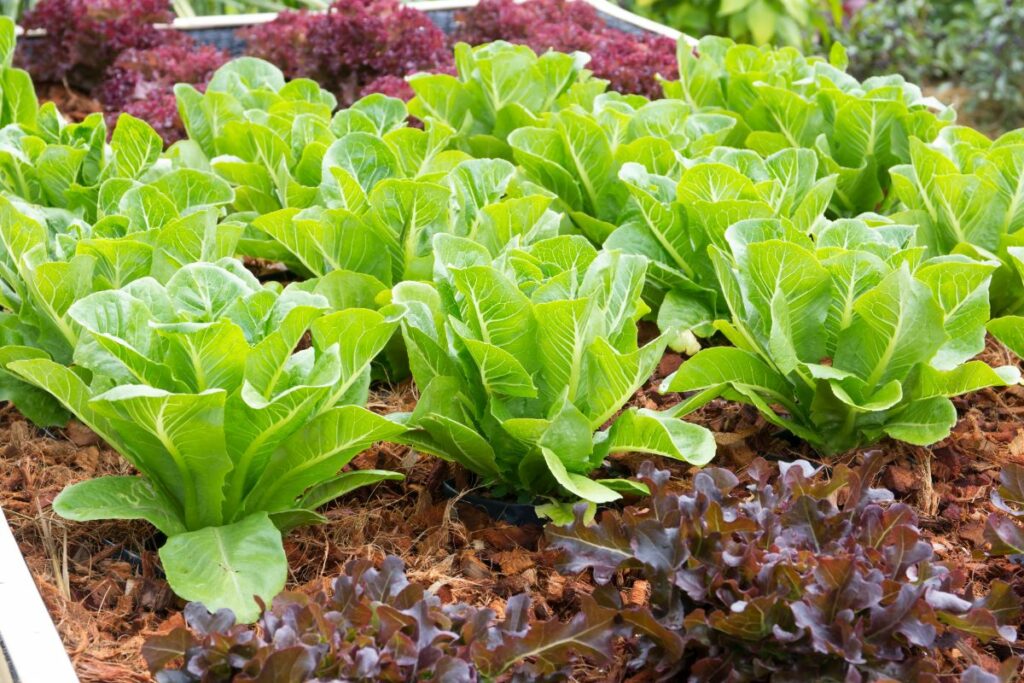
Leaf lettuce is a perfect choice for indoor gardens. It grows quickly and requires minimal space. Place your pots in a sunny spot or under grow lights, and ensure the soil is moist, but not waterlogged. Harvest by cutting outer leaves when they’re about 4-6 inches long.
Spinach
Spinach is a cool-weather crop that flourishes indoors. It needs ample light for about 12-14 hours a day, so grow lights may be necessary. Use well-draining soil and water consistently. You can begin harvesting leaves once they reach a desirable size. Spinach is rich in iron and vitamins.
Swiss Chard
Swiss chard is both ornamental and edible. It prefers a sunny location and well-drained soil. Swiss chard can handle less-than-ideal light and still produce colorful, nutritious leaves. Harvest outer leaves regularly for fresh salads or cooked dishes, and it will keep growing.
Carrots
Carrots can be grown indoors in deep containers. They need loose, sandy soil and around 4-6 hours of light daily. Thin seedlings to allow room for growth, and keep the soil evenly moist. Smaller carrot varieties are best suited for indoor gardens due to their shorter root system.
Beets
Beets grow well indoors with sufficient light and deep containers to accommodate their roots. Use well-draining soil and water consistently. You can harvest both beet greens and roots. Beet greens are rich in vitamins, and the roots are versatile in cooking.
Radishes
Radishes mature quickly and are ideal for indoor gardens. They need about 4 hours of sunlight or grow light exposure, and well-drained soil. Keep the soil consistently moist, and harvest radishes when they are firm and brightly colored. Radish greens are also edible and nutritious.
Onions
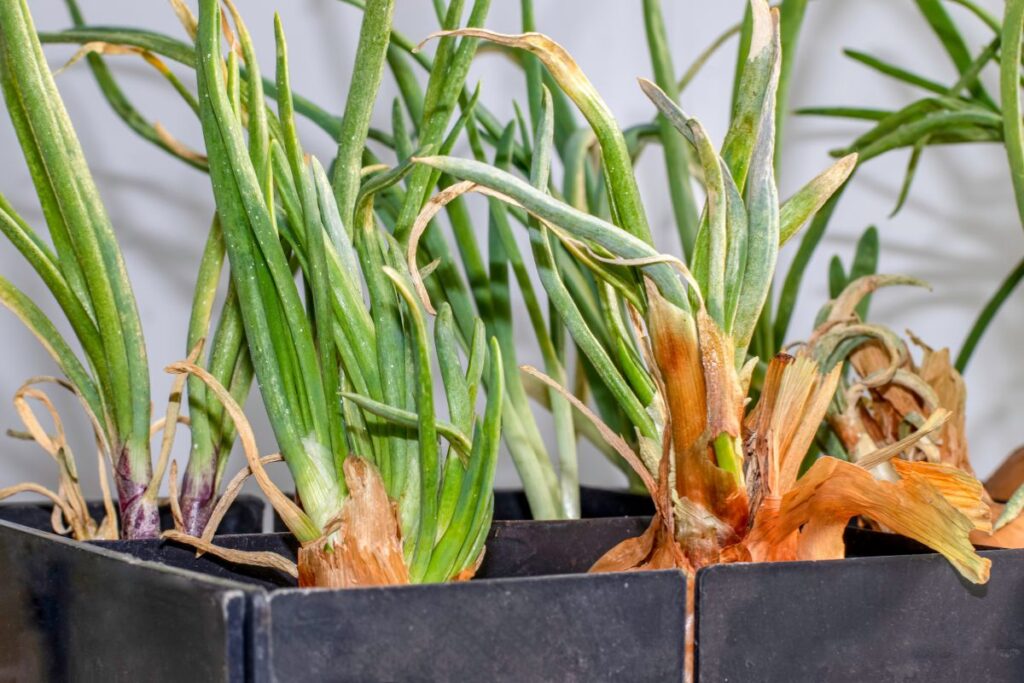
Onions can be grown indoors from sets or seeds. They need generous light and proper soil moisture. Containers should be deep enough to allow for bulb formation. Green onions can be harvested early for salads, while bulb onions take longer to mature but offer great flavor.
Garlic
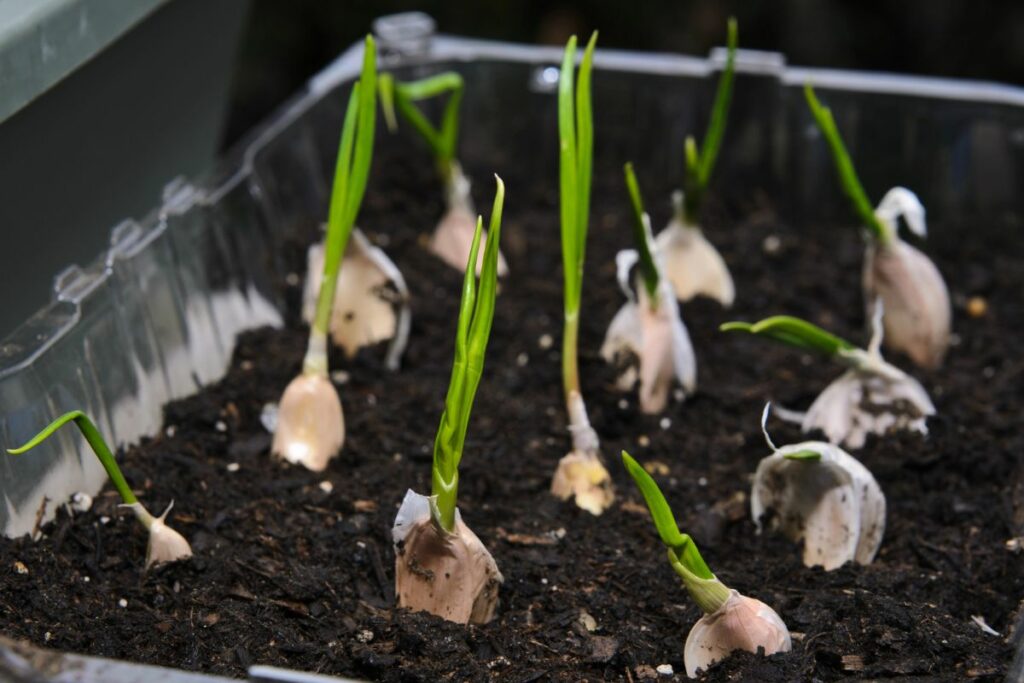
Garlic is easy to grow indoors. Plant individual cloves in well-draining soil and place them in a sunny spot. Water regularly, but avoid oversaturating. Green garlic shoots can be harvested early, while full bulbs require a longer growing period. The pungent flavor of garlic enhances many dishes.
Tomatoes
Tomatoes are a bit tricky but rewarding to grow indoors. They need a lot of light—around 14-16 hours a day—so grow lights are often necessary. Use large pots and stake the plants for support. Opt for determinate varieties which are smaller and more manageable indoors.
Bell Peppers
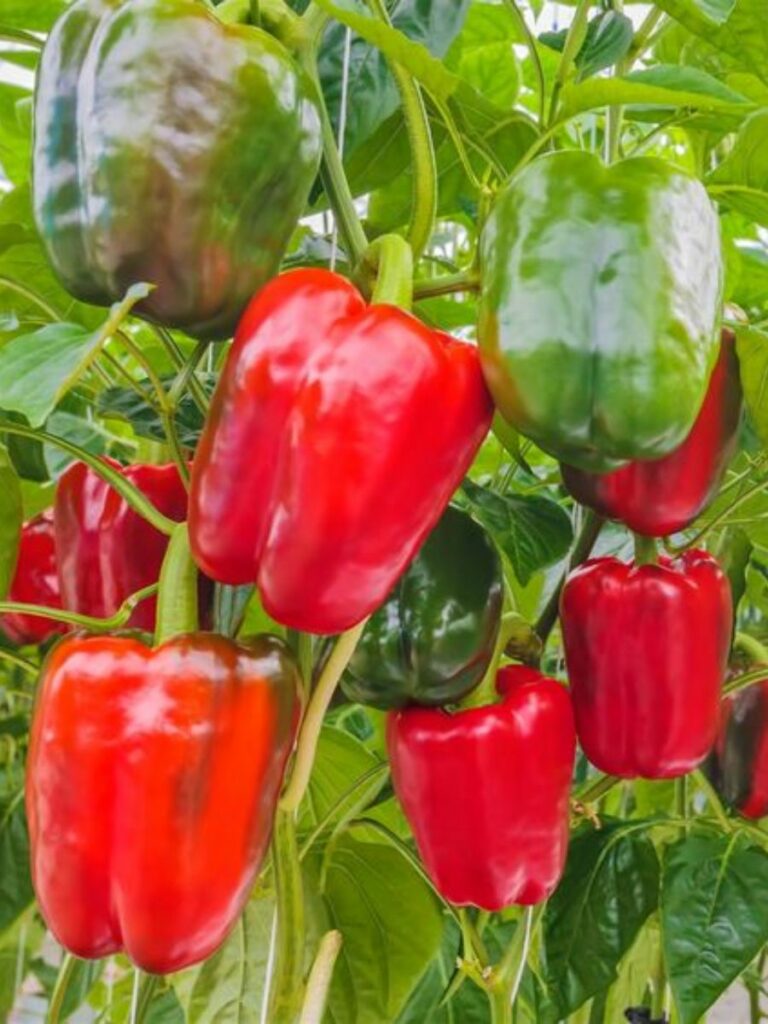
Bell peppers thrive indoors with ample light and warmth. They need at least 14 hours of light daily, so grow lights are beneficial. Use well-draining soil and large containers. Regular watering and fertilizing will help produce healthy, colorful peppers perfect for salads and cooking.
Dwarf Beans
Dwarf beans are compact and ideal for indoor gardening. They require bright light and well-drained soil. Water regularly but avoid overwatering. These plants produce delicious beans that can be harvested in about 50-60 days. They also add variety to your indoor vegetable garden.
Broccoli
Broccoli needs bright light and cooler temperatures to thrive indoors. It can tolerate partial shade but does best with at least 6 hours of direct light. Use large pots and well-draining soil. Regular watering is key. Harvest the central head early to encourage side shoots for extended harvest.
Cauliflower
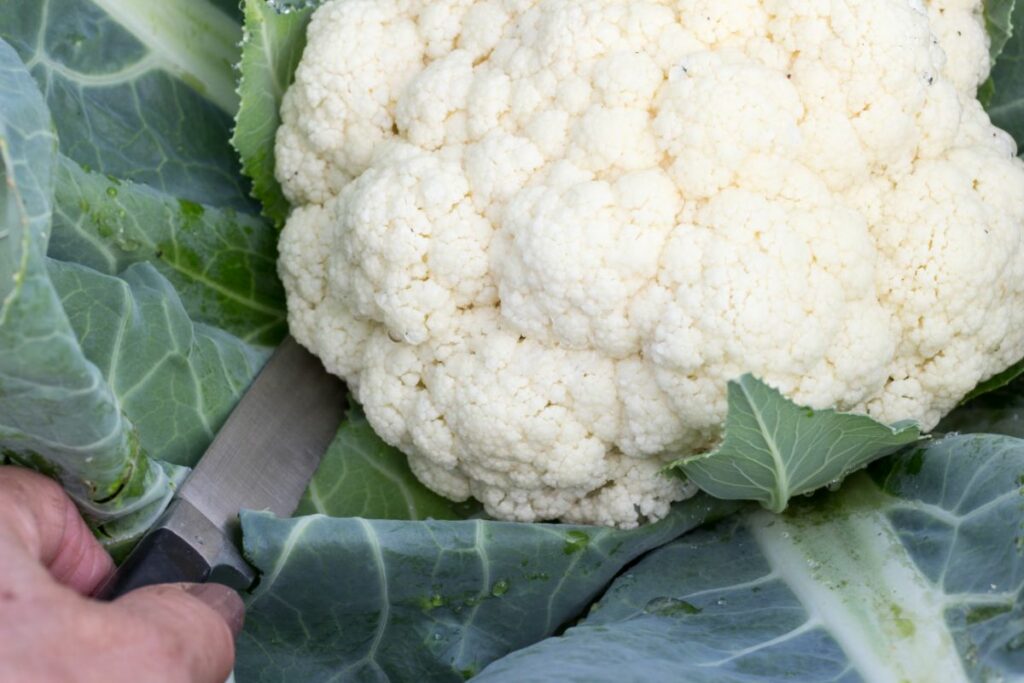
Cauliflower requires similar conditions to broccoli. It needs bright light, cool temperatures, and well-draining soil. Provide enough water consistently and avoid waterlogging the soil. Cauliflower can be harvested when the heads are firm and tightly packed. Indoor growth ensures pests are less of an issue.
Potatoes
Potatoes can be grown indoors using potato bags or deep pots. They need a lot of space and light—at least 5-6 hours daily. Use rich, well-draining soil, and water regularly. As the plants grow, add more soil to cover new growth. Harvest once foliage turns yellow and dies back.
Mushrooms
Mushrooms are highly suited for growing indoors due to their preference for dark, humid conditions. They can be grown in kits or homemade setups. Keep the growing medium moist but not soggy, and place in a cool, dark spot. Various types of mushrooms can be cultivated, adding umami flavor to your dishes.
The Planting Process
Planting vegetables indoors involves precise steps. You start seeds, transplant seedlings, or directly sow seeds depending on the type of vegetable. Each approach ensures healthy growth under controlled indoor conditions.
Starting Seeds
Begin with quality seeds from a reliable source. Use seed trays or small pots filled with seed-starting mix. Place seeds at the recommended depth, usually listed on the seed packet. Lightly water and maintain consistent moisture.
Cover containers with a clear lid or plastic wrap to retain humidity. Place them in a warm spot or use a heat mat. Ensure adequate light by placing seedlings under grow lights or in a sunny window. Rotate trays to promote even growth.
Once seedlings have two sets of true leaves, thin out weaker plants to ensure space for stronger ones. Gradually expose seedlings to outdoor conditions by hardening them off if you plan to eventually move them outside.
Transplanting Seedlings
When seedlings are sturdy and have developed several leaves, they are ready for transplanting. Use individual pots or larger containers with well-draining soil. Carefully remove seedlings from their original containers to avoid damaging roots.
Make small holes in the new containers and insert the seedlings, ensuring their root systems are fully covered. Gently press the soil around each plant. Water lightly but thoroughly to settle the soil and provide moisture to the roots.
Place transplanted seedlings in a well-lit area. Continue to monitor light, temperature, and moisture levels. Transplant shock is common, so be patient as the plants adjust to their new environment.
Direct Sowing
Some vegetables thrive when seeds are directly sown into containers. Choose large pots or raised beds with fertile, well-draining soil. Ensure the containers have drainage holes to prevent waterlogging.
Broadcast seeds evenly or plant them in rows. Follow the depth and spacing guidelines on the seed packet. After planting, lightly cover seeds with soil and water gently to ensure good soil-to-seed contact.
Place the containers in a sunny location or under grow lights. Keep the soil consistently moist but not waterlogged. Thinning may be necessary as seedlings emerge to prevent overcrowding and promote healthy growth.
Daily Maintenance and Care
To keep your indoor vegetable garden thriving, you need to focus on the right watering techniques, regular pruning and harvesting, and effective pest management. These daily tasks are crucial for healthy plant growth and a bountiful harvest.
Watering Techniques
Proper watering is essential for the health of your indoor vegetable garden. You should check the soil moisture every day. The top inch of soil should be slightly dry before you water again. Overwatering can lead to root rot, so ensure your pots have good drainage.
Use a watering can with a fine spout for even distribution. Early morning watering is best as it allows plants to absorb moisture without risk of fungal growth. Drip irrigation systems can also be a great investment for consistent watering. Monitor your plants closely and adjust as needed, especially during changing seasons.
Pruning and Harvesting
Pruning and harvesting are important to encourage plant growth and production. Regularly prune dead or yellowing leaves to let the plant focus energy on new growth. Use clean, sharp scissors or pruning shears to make clean cuts and prevent damage.
Harvest vegetables as they ripen to encourage continued production. For instance, pick leafy greens like lettuce and spinach regularly to keep the plants producing fresh leaves. For fruiting vegetables like tomatoes or peppers, wait until they are fully ripe for the best flavor. Enjoy the process and fresh produce from your garden.
Pest Management
Pest management in an indoor garden requires vigilance. Check your plants daily for signs of pests such as aphids, spider mites, or whiteflies. Look out for discolored leaves, holes, or sticky residue on the plants.
Remove pests by hand or use a mild solution of water and dish soap sprayed on affected areas. Introduce beneficial insects like ladybugs if necessary. Keep your garden clean and remove any fallen leaves or debris that can harbor pests. With regular inspection and treatment, you can keep your indoor garden pest-free and healthy.
Troubleshooting Common Problems
Indoor gardening vegetables can be incredibly rewarding, but it’s not without its challenges. Below, you’ll find some common issues and how to tackle them to ensure your indoor garden thrives.
Nutrient Deficiencies
Nutrient deficiencies can cause stunted growth and discolored leaves. Watch for yellowing leaves, which usually indicate a lack of nitrogen. Adding a balanced fertilizer can help.
If leaves show dark spots or purplish hues, phosphorus might be the culprit. Potassium deficiencies often cause leaf edges to turn brown. Check your soil pH, too, since many nutrients become unavailable if the pH is off.
Regularly monitor your plants, and consider using a hydroponic nutrient solution for consistent results.
Overwatering Issues
Overwatering can lead to root rot and fungus gnats. Symptoms include wilting, yellowing leaves, and a bad smell from the soil. Make sure your pots have good drainage and let the top inch of soil dry out before watering again.
You can also use a moisture meter to avoid overwatering. If you suspect root rot, remove affected roots and repot in fresh soil. Fungus gnat larvae thrive in wet soil, so keep the area dry and use sticky traps if needed.
Lighting Challenges
Lack of adequate light can make plants leggy and weak. Look for signs like stretching, pale leaves, or slow growth. Place plants where they can get 12-16 hours of light per day using grow lights that mimic natural sunlight.
Consider LED grow lights, which are energy-efficient and provide the full spectrum of light. Position lights about 6-12 inches above the plants and adjust as they grow. Ensure the lights are on a timer to simulate natural day-night cycles.
By addressing these common problems, you’ll help your indoor garden reach its full potential.

